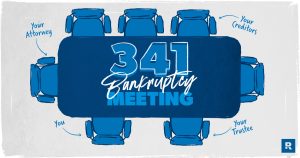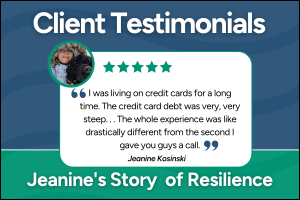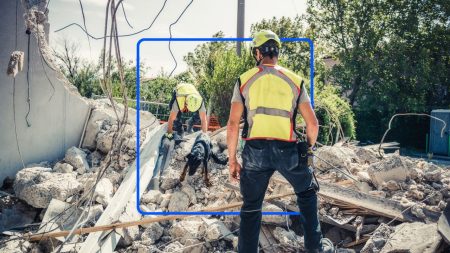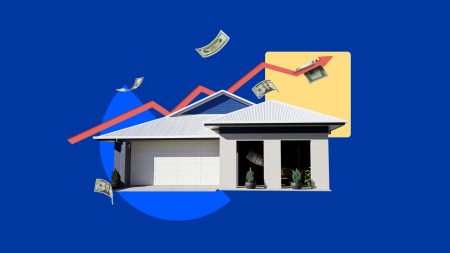Key takeaways
- If you have an existing VA loan, you can refinance it to get a better interest rate, change your loan term or tap into your home equity.
- To qualify for a VA mortgage refinance, you’ll need to meet specific service, income and credit score guidelines.
- The two primary VA loan refinance options are Interest Rate Reduction Refinance Loans (IRRLs) and VA cash-out refinances.
Refinancing your current mortgage into a VA loan can be a smart move if you’re an active-duty military member, a veteran or an eligible spouse. Fortunately, qualifying to refinance to a VA loan isn’t overly difficult, provided you meet the military service requirement and lender criteria.
Here’s everything you need to know about VA loan refinancing: What it is and how it works.
What is VA loan refinancing?
A VA loan or mortgage refinance is a home loan product backed by the Department of Veterans Affairs (VA). It lets you swap your current loan for a new one, but with different terms. Depending on the type of loan you select, you may be able to get a lower interest rate, change the loan term or convert your home equity into cash.
In addition, if you originally took out an adjustable-rate mortgage (ARM) and want more predictable monthly payments, you can switch to a VA fixed-rate mortgage.
Types of VA loan refinancing
There are two main options available to you when you choose to refinance with a VA loan:
- Interest Rate Reduction Refinance Loan (IRRRL): Often called a VA streamline refinance, an IRRRL is available to current VA loan-holding homeowners looking to secure a lower interest rate.
- VA cash-out refinance: Lets any mortgage-holder swap out a current home loan with a new one and tap into the home equity they’ve built up.
IRRRL vs. VA cash-out refinance
IRRRL |
VA cash-out refinance |
||
|---|---|---|---|
| Primary Purpose | To secure a lower interest rate or switch from an ARM to a fixed-rate mortgage | To tap into your home equity and convert it into cash | |
| Property Type | Any residence: primary, vacation home, etc. (if previously occupied) | Primary residence | |
| Requirements |
|
|
|
| Closing Costs | Can be rolled into the loan or paid by the lender | Must be paid upfront by borrower | |
| Loan Restrictions | Limited to VA-backed home loans | Can be used for conventional and VA-backed loans |
Who qualifies for a VA mortgage refinance?
As the name implies, VA loan refinancing is available to current and former members of the U.S. military. More specifically, here’s what you’ll need to qualify for VA refinance loans:
- Service: Eligibility for a VA home loan typically requires 90 days of active-duty military service during a named conflict, six years in the National Guard or Reserves, or 181 consecutive days of active duty in peacetime. Veterans must have an honorable discharge, though exceptions exist. You may also qualify if your spouse died in the line of duty or due to a service-related disability. VA loans also require a Certificate of Eligibility (COE) verifying military service, obtained through your lender or directly through the Department of Veteran Affairs.
- Income: Borrowers also need to show sufficient income to repay their loans, with a debt-to-income (DTI) ratio typically capped at 41 percent.
- Credit score: While the VA doesn’t set a minimum credit score, most lenders look for at least 620 — except for the IRRRL, which often doesn’t require underwriting).
- Property type: Property purchased with a VA loan must be your primary residence, not a second home or rental property.
- Timing: You should occupy the new home within 60 days of closing, though extensions up to 12 months are possible under certain conditions. Moving in beyond 12 months is rarely considered acceptable by the VA.
How to refinance into a VA loan
It is relatively simple to refinance into a VA loan. However, the two types require slightly different steps to obtain.
Interest Rate Reduction Refinance Loan (IRRRL)
You can use the Interest Rate Reduction Refinance Loan (IRRRL) — aka the VA streamline refinance — to exchange an existing VA loan for a new VA loan with a lower interest rate. Many homeowners also use it to switch from their VA adjustable-rate mortgage (ARM) to a fixed-rate mortgage.
Other benefits to consider:
- This loan is usually available without a home appraisal or any underwriting.
- You’re not required to pay closing costs upfront.
- The funding fee is lower than with VA new-purchase and construction loans.
In terms of costs, you’ll pay a 0.5 percent fee to take out an IRRRL along with the lender’s closing costs, which can be rolled into the new loan. Some lenders also offer to pay the closing costs for you in exchange for a higher interest rate.
However, you can only use the VA streamline mortgage if your new interest rate is lower than your current rate. That means you may have to wait for interest rates to drop before you can pull the trigger on a VA IRRRL. There’s one exception: If you are switching from a VA ARM loan to a fixed-rate loan, then the new loan’s rate may be higher than the ARM rate.
Also, you can only borrow up to the same amount as your existing mortgage. This means you can’t get an extra amount of money, as people often do when refinancing. For that, you’ll need a VA cash-out refinance.
VA cash-out refinance
A VA cash-out refinance loan allows current homeowners to refinance their mortgages and take out some or all of their accrued equity. You can use this type of loan to refinance either an existing VA loan or a conventional mortgage, and the VA will guarantee loans worth up to 100 percent of the home’s value. Like other VA loans, this loan requires you to meet military service requirements and have a COE.
It can be beneficial if:
- You want to switch from a conventional to a VA-backed loan.
- You want to make home improvements that will increase your property value.
- You want to pay off expensive debt and save a bundle in interest.
If you’re considering this option, have a clear goal in mind for the funds, and be realistic about your habits. If you intend to use the cash to pay off credit cards, for example, you’ll need to be sure you won’t accumulate an unmanageable balance again in the future.
If it’s your first VA home loan, the funding fee (as of April 2024) is 2.15 percent. But if you’ve already used your VA loan benefit before, the funding fee increases to 3.3 percent. You’ll also be responsible for closing costs.
Benefits of refinancing to a VA loan
The benefits of refinancing with a VA loan are plentiful, which is why VA home loans are so popular among those who can qualify. Here are the other key advantages of refinancing with a VA loan:
- No mortgage insurance needed: VA home loans don’t require mortgage insurance, even if you don’t put money down.
- No cash upfront: No down payment is needed, though closing costs are still required for refinance loans.
- Minimal upfront costs: VA loans typically charge a funding fee that the borrower pays upfront. It can be wrapped into the closing costs, but this means paying more interest over time. The fee may be waived if you have a service-related disability or if you’re the spouse of a deceased veteran.
- Save on interest: VA home loan rates are typically competitive, potentially saving you money compared to conventional loans.
- Easier to get: Qualifying is easier due to the VA’s more flexible credit and income criteria, though cash-out refinance loans have stricter eligibility rules.
- No prepayment penalties: There are no penalties for paying off your VA loan early.
- More protectable payments: If you prefer a consistent monthly payment, you can switch from an adjustable-rate to a fixed-rate VA mortgage.
Should you refinance into a VA loan?
It depends on your unique financial situation. VA loans come with various perks that could make them the better choice. You’ll likely get a lower interest rate than you would with other refinancing options and more affordable closing costs. Plus, you won’t pay mortgage insurance if you refinance into a VA loan. In fact, you might not need to make a down payment at all.
If you already have a VA loan you want to refinance, an IRRRL could even allow you to switch to a new loan without undergoing underwriting. If you’re looking to access your home equity, a VA cash-out refinance could also be the better option, as you could be eligible to pull out up to 100 percent of the appraised value of your home.
But there are special expenses (those funding fees) and certain limits. Ultimately, you must consider the costs that come with these loan products to determine if refinancing into a VA-backed loan is a smart financial move.
If you’re thinking about refinancing your VA or conventional mortgage, a VA loan calculator can help you estimate your new monthly payment. While many banks, credit unions and online lenders offer VA loans, stick with specialists in VA lending, as the application can be complicated.
Our list of VA-approved lenders can be a starting point, and talk to military friends or family about their experiences. Remember, it’s the lenders who determine rates and terms, so compare offers before deciding.
Read the full article here










